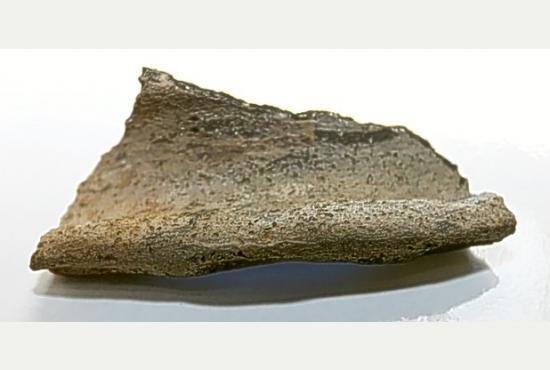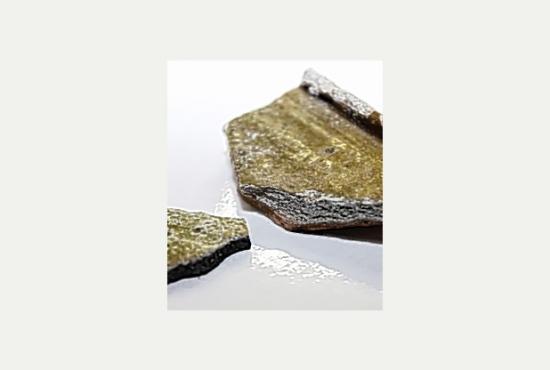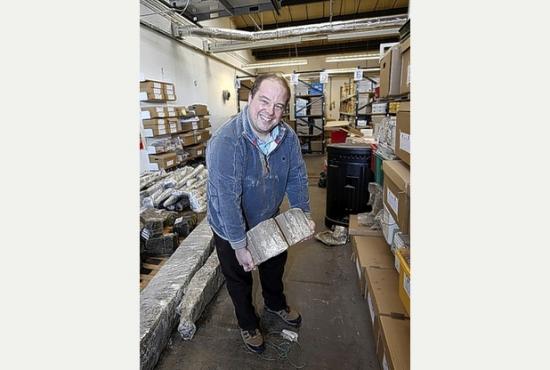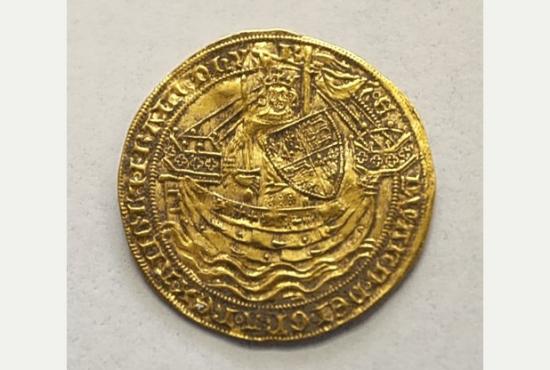Source - http://www.nottinghampost.com/Digs-tram-route-unearth-evidence-Romans-Lenton/story-20725315-detail/story.html#ixzz2udcoJ900

Hard at work: Cleaning artefacts are, from left, Tina Roushannafas, Joe Groarke and Povilas Cepauskas.
History experts have declared it's an exciting time for archaeology in the city and county.
Following a rare opportunity to excavate sites in Lenton and Clifton – which have been earmarked as new tram stops – hundreds of prehistoric, medieval and Roman artefacts have been unearthed.
tram stops – hundreds of prehistoric, medieval and Roman artefacts have been unearthed.
This includes one of the most exciting finds in recent times – a small piece of broken pot which suggests, for the first time, that the Romans once lived in Lenton.

The rim of a cooking pot. Left: The shard from a Roman plate. Right: green glazed pottery.
 To the naked eye, the small orange fragment may seem somewhat unimpressive but what could so easily be overlooked is, in fact, a shard of Samian pottery dating back to around one AD.
To the naked eye, the small orange fragment may seem somewhat unimpressive but what could so easily be overlooked is, in fact, a shard of Samian pottery dating back to around one AD.
It is thought to be part of the base of a big Roman plate from a villa.
During the digs at the former Lenton Priory, near the Boat pub in Priory Street, and at Clifton's park-and-ride site, off Barton Lane, this piece of pottery was the only Roman artefact found.
But it is the first piece of evidence to suggest the presence of a Roman settlement.
Across the county there are around 400 Roman settlement sites but this would be one of the closest to the built-up centre of Nottingham.
A team of 25 archaeologists worked at the Lenton site between November 2012 and March 2013.
It was already known that the biggest medieval church in the county – as large as St Pancras – was once located there.
The 12-hectare site at Clifton was excavated between June and November 2012 and again in December 2013.
Dr Gareth Davies, project manager at Trent and Peak Archaeology, which was awarded the contract for the excavations, was delighted by the opportunity to work at the two sites.
He said: "This dig is of incredibly high importance and was a rare opportunity for us.
"The Clifton park-and-ride excavations have provided a rare opportunity to observe a large portion of prehistoric landscape.
"One of the most interesting things is that although this large area was occupied for thousands of years, human activity stopped perhaps as early as 100 BC.
"The complete lack of Romano period activity over the entirety of the site is striking.
"Because of the excavation results, we can now suggest that Roman period settlement in this part of Nottinghamshire shifted further south towards the Trent Valley and the A453, which is a known Roman road."
Once investigations are complete, the finds will be donated to local museums and the results will be fully published.

Discoveries: Dr Gareth Davies holding a stone thought to have originally made up the archway and entrance to a church in Lenton.

Gold coin: A noble minted around 1344-1346 during the reign of Edward Third.
The excavations were carried out alongside other advance work for the tram scheme, which is being undertaken by Taylor Woodrow Alstom JV, and were in the planning stages as early as 2008.
Narthan Moodley, Taylor Woodrow section manager, said: "Although the written scheme of investigation identified the area as medium risk, it soon became apparent that the investigation work would exceed the allowable programme and budgeted costs.
"It is a true testament to all parties concerned that they could reassess the scheme and make the necessary adjustments to undertake an intense investigation so that the archaeology was identified and recorded appropriately, allowing construction activities to commence with a minimum impact.
"I have had the pleasure of working with Ursilla Spence, archaeology leader at Notts County Council, and Dr David Strange-Walker, of Trent and Peak, to develop a robust strategy to overcome a challenging investigation.
"It is with all parties' commitment that we have managed to facilitate the additional investigation works to ensure that the scheme was carried out efficiently to facilitate the construction activities at the park-and-ride site."
Trent and Peak Archaeology, in Holly Lane, Beeston, is part of the York Archaeological Trust, which manages the Viking Centre in York.
Dr Strange-Walker, NET-2 project manager with Trent and Peak Archaeology, said: "We are grateful to Taylor Woodrow Alstom JV for affording us excellent resources to complete these excavations on time and with such good results. We are undertaking a number of archaeological excavations as part of the tram works and these are creating a huge amount of new information about the early development of Nottingham which can be passed on to future generations."